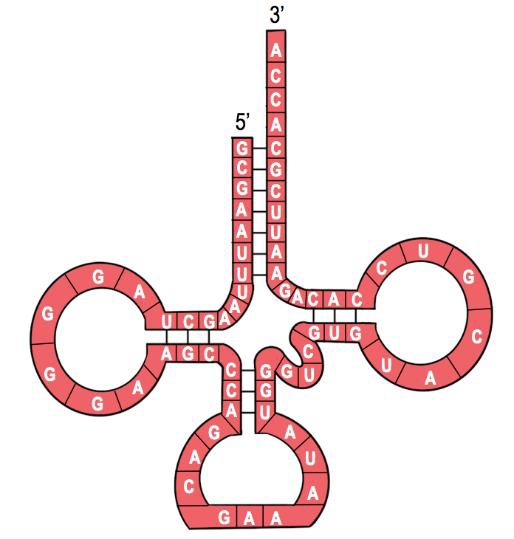Translation is a crucial biological process that synthesizes proteins by interpreting the encoded messages carried by messenger RNA (mRNA). This process primarily involves ribosomes and transfer RNAs (tRNAs), which play essential roles in protein assembly. Ribosomes are complex structures composed of proteins and ribosomal RNA (rRNA), serving as the main site for protein synthesis during translation.
Transfer RNAs, or tRNAs, are specialized RNA molecules that transport amino acids to the ribosomes. Each tRNA has a specific anticodon that pairs with a corresponding codon on the mRNA, ensuring that the correct amino acid is added to the growing polypeptide chain. This pairing is fundamental to the accuracy of protein synthesis, as it dictates which amino acid corresponds to each codon in the mRNA sequence.
tRNAs exist in two states: charged and discharged. A charged tRNA is one that is linked to an amino acid, ready to participate in translation. The term "charged" in this context does not refer to an electrical charge but rather indicates that the tRNA is carrying an amino acid. Conversely, a discharged tRNA is not attached to any amino acid, making it inactive in the protein synthesis process.
During translation, the ribosome facilitates the interaction between mRNA and tRNAs, allowing the sequential addition of amino acids to form a polypeptide. The tRNA's anticodon pairs with the mRNA's codon, ensuring that the correct amino acid is incorporated into the protein. This intricate process highlights the importance of both ribosomes and tRNAs in translating genetic information into functional proteins.
As we delve deeper into the study of translation, understanding the roles of ribosomes and tRNAs will be essential for grasping how proteins are synthesized from the genetic code encoded in mRNA.



